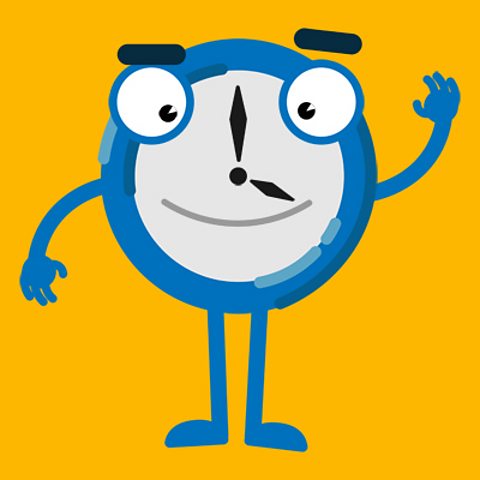
What does our calendar have to do with the Sun and the Moon?
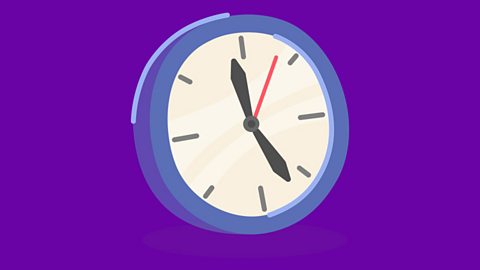
Days, weeks and months
Twenty-four hours, 30 or 31 days, sometimes 28 days or even 29, 365 days… The way we measure the passage of time on Earth may seem really random, but it's not (or not completely!)
Years and days are all defined by the rotation of the Earth as it travels around the Sun, and months are related to the movement of the Moon around the Earth.
Let's start with something you will already know: why do we have day and night?
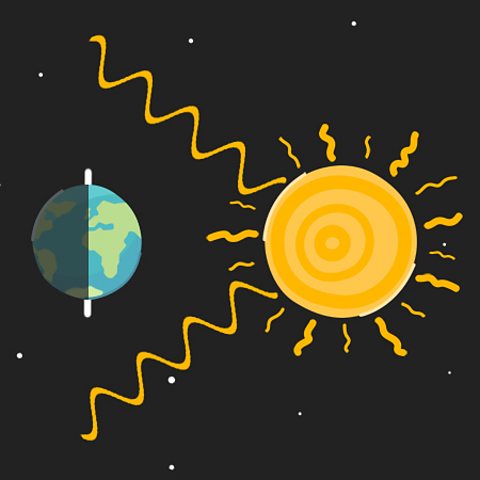
Spin, spin, spin
As the Earth spins around it axis, only half of it can face the Sun at any given time and be lit up by its rays.
It is day on the part of the Earth that is facing the Sun and night on the part facing away from the Sun.
The Earth takes one day to completely spin around, and it takes roughly a month for the Moon to go all the way around the Earth in a circle. The path that an object in space, like the Earth, follows around another object, like the Sun, is called an orbit.
Speaking of the Moon, have you noticed how, looking at the it from where we are, it looks different as the month goes by? The different ways the moon can look are known as phases
The phases of the Moon
While the sun always lights up one half of the Moon, the Moon looks different throughout the month because of the angle that we can see it from, which lets us see more or less of the lit up bit. Scroll through the images to learn about lunar phases and their names.
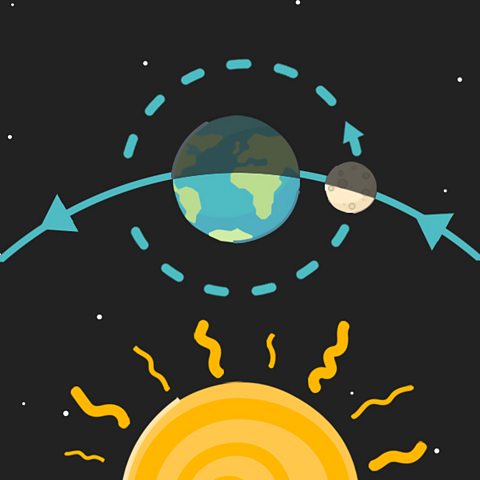
Around and around and around…
As we've seen, the length of a lunar month is given by a natural phenomenon: the Moon orbiting the Earth.
A calendar month, on the other hand, is a portion of a year that's been created by us humans. Not all months have 30 days, and not all calendars have 12 months!
We've talked about months - so how about years?
A year is defined as the time that a planet takes to travel around the Sun.
It takes the Earth just under 365 and a quarter days to orbit the Sun. Every four years all of those quarter days are added to our calendar, which is why we have a February 29th each leap year.
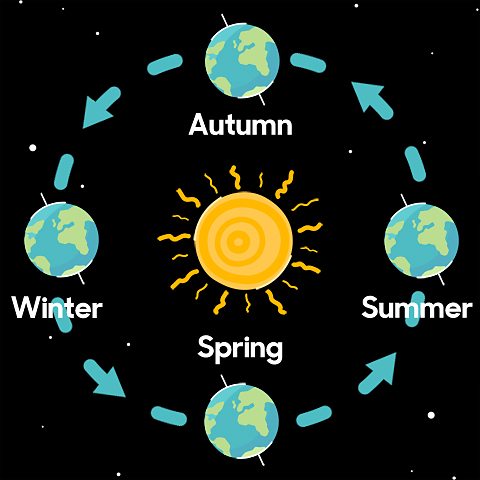
Why do we have seasons?
As we've said, the Earth spins around an axis: an imaginary line which runs through the centre of the planet, from the North to South Pole.
The Earth's axis is slightly tilted, though, at an angle of 23.5°. This means that, as the Earth orbits the Sun, at certain times of the year parts of the Earth are tilted towards the Sun, making the weather warmer.
So, in the UK, which is in the top part of the Earth known as the northern hemisphere, we are tilted towards the Sun in what we consider our summer months, and we're tilted away from the Sun during our winter. While we experience summer from June to September, those are very cold months in the southern hemisphere!
Not a matter of distance
Do you think that warm weather in summer and cold weather in winter had to do with how far we are from the Sun? Scroll down and watch the film to find out whether that's true or not.
Reasons for the seasons
You'll have noticed that the days are much, much longer in the summer than in the winter. This fascinating Stargazing Live film will tell you why.
Why do we have seasons?
Presenter:
I love winter, true it's cold outside and have you noticed how the days are shorter? But nothing beats coming home to a warm house on a cold day.Have you ever wondered why summer and winter are so different? Why do the days get shorter and why does the weather get colder? You probably know that it's something to do with the sun, but it might not be what you think.Perhaps you think that it's colder in winter because the sun is further away. Well that would make some sense.
After all, the closer you get to a source of heat, like this fire, the warmer you feel it getting.It's true that at certain times of the year, the Earth is closer to the sun than at others, that's because it doesn't go around the sun in a perfect circle.But that's actually not the reason why it's warmer in summer and colder in winter, in fact we're closest to the sun during the UK winter, which might sound surprising.So what's the real reason our seasons are so different? Well you can get a clue by looking at a globe.Have you ever wondered why globes are always angled? Well it's not an accident, it matches the fact that the Earth is tilted in real life. If you draw a line going form the Earth's South Pole up to the North, that's the axis around which the Earth spins.
Our planet rotates at an angle of 23.4 degrees and it's this tilt that gives Earth its seasons. But how?Imagine that this lamp here is our sun at the centre of the solar system and here, very obviously, is the Earth, which takes one year to do a complete orbit. When it's over here in the solar system, the top part of the Earth is pointed towards the sun.This is when we have our summer in the UK, because we're in this northern half of the Earth. But you might still think it's all about distance, that we're tilted closer to the sun. Actually, it's the angle of the sunlight that makes the difference.The sun can be almost directly overhead, with that the sun's light comes in in a much more concentrated way and the temperatures rise.Contrast that with six months later when the north is tilted away from the sun.When it's winter in the UK, the sun's light comes in at a shallow angle and it just grazes over the surface of the Earth. The sunlight spreads itself over a large area and so we don't feel very much heat.
The Earth's tilt has another surprising effect; it means that seasons on the bottom half of the planet are turned on their head.When it's summer in the UK, Australia is pointed away from the sun, so they're having winter. And that means their seasons are the opposite of ours.So at Christmas, when we're wrapped up warm and braving the cold, Australians are down at the beach enjoying the sunshine. There's one more strange seasonal affect that's down to the Earth's tilt. How many hours of sunlight we get varies throughout the year.You'll have noticed than in winter it gets dark really early, perhaps by 4 o'clock, which is not long after most people have finished school, whereas in summer we have daylight until much later, perhaps 10 o'clock at night. So how's this caused by the tilt? Well let's have a look at the Earth again, here it is with sunlight falling on the day side. Now, the top of the Earth is pointedaway from the sun, so this is a time when it's winter in the northern hemisphere. Now where's the UK? So here's the UK and if I spin the Earth, takes 24 hours to rotate once, you'll see that the UK goes into darkness very quickly and in fact, it spends most of its time in darkness.The north is tilted away from the sun, so as the Earth rotates, the UK spends most of its time in darkness. This means a winter night can be 16 or 17 hours long.Whereas in the summer, if I spin the globe around, you can see that the UK spends much more time in the sunlight.
Look how little time the UK spends in darkness now. Now wonder summer days are so long. The Earth's not the only planet which is tilted. Other planets also orbit the sun at an angle, so they have seasons and short and long days too. But the most extreme planet has to be Uranus, it's tilted almost completely on its side, that means in some places you might get 21 yearsof continual sunlight, whilst in others, 21 years of night time. Can you work out why?The Earth's tilt may not be as extreme as it is on Uranus, but it's amazing the impact that it has.The seasons drive almost everything on Earth, they tell flowers when to bloom, leaves when the drop and bears when to hibernate. Almost everything in nature can be tracked back to our simple 23.4 degree tilt.
Animals in the stars
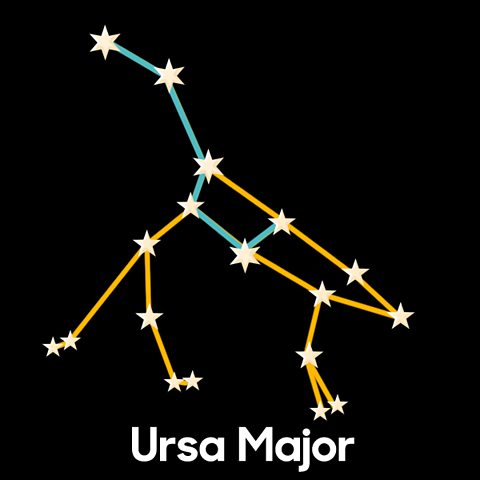
Galactic gifts
Throughout history, people have spotted patterns in clusters of stars and named them after objects, animals and mythological characters. Stars grouped together are known as constellations.
Many of the constellations that could be seen from the northern hemisphere were named by the Ancient Greeks, and many of the rest weren’t named until after the 15th Century, when more people left Europe to travel around the globe.
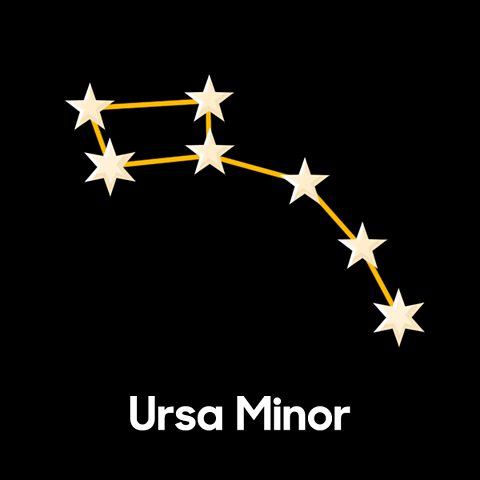
Constellation characters
Besides the animals that can be seen in the night sky, there are lots of characters from Greek mythology too. Download our activity sheet to find out more about some of these figures in the stars.
Download our activity sheet
What's behind the names of the days and months?
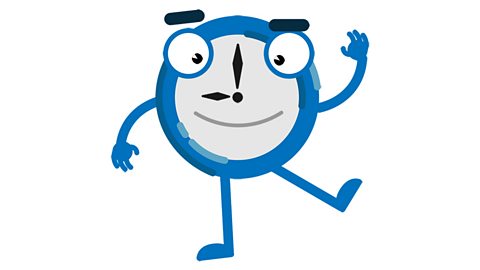
What are days and years?
We don't feel it, but the Earth is always spinning. It spins like a top around an imaginary line running from the North to the South Pole, which we call its axis. In fact, all of the planets in our Solar System spin in this way! A 'day' is the amount of time it takes for a planet to make one complete spin.
As well as spinning, the Earth is also travelling around the Sun. A 'year' is the amount of time it takes for Earth to travel all of the way around the Sun and back to where it started. Again, all of the planets in our Solar System travel around the Sun in this way and each has its own year.
But did you know that days and years are very different on the other planets in our Solar System?
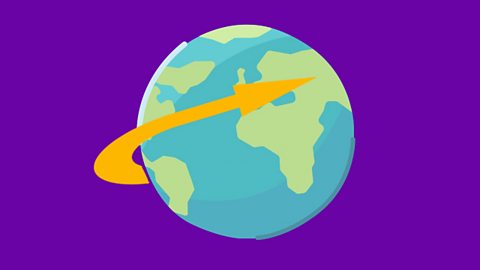
Where is a day not 24 hours?
Days on Earth last 24 hours (well, 23 hours and 56 minutes to be precise!). It takes the Earth this long to spin all of the way around. It is the spinning of the Earth that gives us the different times of day. Daytime happens when we are facing the Sun, and night-time happens when we are facing away from the Sun. So when it is daytime here in the UK, it will be night-time in Australia because it is on the other side of the Earth.
The spinning of the other planets means that each has days as we do on Earth, but the other planets spin at different speeds. This means that they have days of different lengths to ours.
Lengths of days
The planet that spins fastest is Jupiter, which has a day lasting around 10 hours. There are three other planets with days shorter than Earth - Saturn (about 11 hours), Neptune (about 16 hours) and Uranus (around 17 hours). The slowest spinning planet with the longest day is Venus . It takes 243 Earth days to rotate - that's around 2/3 of an Earth year! Mercury also rotates very slowly, although much quicker than Venus. Its day lasts 59 Earth days. Mars has the most similar day to Earth at approximately 25 hours.
How long is a day on Venus?
Can you match the planets with the length of their days? Drag and drop the planets into the correct boxes.
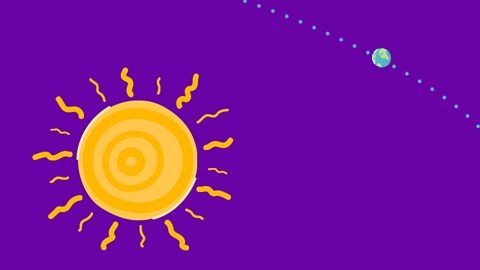
Where is a year not 365 days?
Gravity is a force that acts between all objects. It's the pull of gravity keeps each of the planets in motion around the Sun.
A year is the time it takes a planet to travel all of the way around the Sun, and the Earth takes around 365 days to do this. The length of a year on each planet is different depending on its distance from the Sun. The further away a planet is, the slower it travels and the longer it takes to go all of the way around the Sun.
Lengths of years
The further from the Sun a planet is, the longer its year is. Mercury is closest and has the shortest year, then Venus, Earth, Mars, Jupiter and Saturn. Neptune is the furthest away, so has the longest year.
The difference in year length as you go from planet to planet can be massive - Mercury's year is much shorter than Earth's, at only 88 Earth days, while Neptune's year is very long indeed, at nearly 165 Earth years! This means that one Earth year is the same length of time as 4.1 years on Mercury and only 0.004 years on Neptune.
Why do we have time zones?
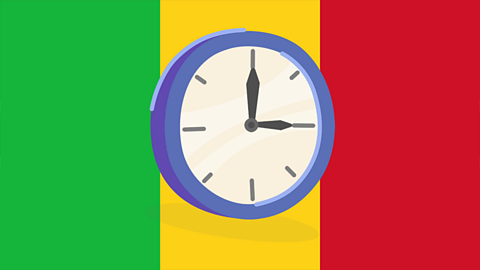
In the zone
If you've ever traveled to another country, you may have had to change the time on your watch or phone when you got there.
Or you may have watched a show or a football game live on TV, and noticed it was dark there while it was still daylight where you were. Have you ever wondered why that is?
Every country in the world is located within a time zone. Let's find out what they are and why we have them in the first place.
Brain Freeze
Because the Earth spins on its axis, different parts of our planet receive light from the Sun, while others are in darkness. Watch Brain Freeze's Doctor Knowles and Professor McCork explain more.
Doctor Knowles, Professor McCork and Ms Hucklebuck investigate time zones and find out why the Earth spins on its axis.
Ms. Hucklebuck:
Oh, Jonathan, I'm so nervous about my first time on TV. I'm not sure I'm ready.
Colin:
You'll be fine, Ms. Hucklebuck, it's all here in the notes. Oh, and by the way the name is-- [SCREAMS]
Doctor Knowles:
Morning, Colin. It's almost five am in here Mongolia. It's freezing cold but I'm ready to go.
Professor McCork:
And it's almost six pm here in sunny Rio and I'm ready to party! Hey, hey!
Colin:
Oh, oh, oh, oh!
Ms. Hucklebuck:
Jonathan! My notes!
Colin:
Break a leg, Ms. Hucklebuck.
Ms. Hucklebuck:
Woo, woo, woo!
Doctor Knowles:
Ah!
Ms. Hucklebuck:
I think maybe I just did!
Male, voice over:
This is Brain Freeze with Doctor Knowles, Professor MCCork, Colin the Floor Manager and Ms. Hucklebuck. Stand by!
Colin:
Come on, everybody.
Ms. Hucklebuck:
Welcome to Brain Freeze, Time Zone Special.
Professor McCork:
It's time for–
Male, voice over:
Today's Big Question.
Ms. Hucklebuck:
Today, we're asking you um, uh, oh.
Professor McCork:
Today we're asking:- How does the earth spin on it's axis?
Doctor Knowles:
The earth spins on it's axis once every 24 hours, which gives us day and night. Before there were mechanical clocks, time was measured mostly using the sun. When the sun was at it's highest point we called that noon. But as the world become more connected there was a need for a more universal system of time measurement.
Professor McCork:
So what did they do?
Doctor Knowles:
The solution was the Standard Time Zone System. A series of imaginary lines dividing the earth into 24 zones, each an hour apart.
Professor McCork:
So when it's nighttime here in Rio.
Doctor Knowles:
It's morning time here in Mongolia.
Ms. Hucklebuck:
Wait! I, I've got this one. [CLEARS THROAT] See you after the break!
Colin:
And we're clear!
Ms. Hucklebuck:
Oh, that was a disaster. I just know I can do better.
Colin:
Here are your notes for part two. Please be extremely careful.
Ms. Hucklebuck:
Whoa! No, not again!
Professor McCork:
Hey, hey!
Professor McCork:
Hey, Colin, thanks for sending me to Rio. This is the best fun ever. I'm even learning how to do the limbo.
Doctor Knowles:
Professor, you do realize you're supposed to be doing actual science work, don't you
Professor McCork:
Well, I'm working on my suntan. That's kinda science, isn't it? Hey!
Doctor Knowles:
Ah!
Colin:
Oh, crumpets! We're going live!
Ms. Hucklebuck:
What, what will I do without my notes, Jonathan?
Colin:
You'll just have to wing it, Ms. Hucklebuck. And for the last time, the name's Colin!
Male, voice over:
Today's Big Answer!
Ms. Hucklebuck:
You can do this. You are a star. This is your destiny. Take it by the horns. Welcome back, Brain Freezers.
Doctor Knowles:
[GASPS]
Ms. Hucklebuck:
So, Doctor Knowles, why does the earth spin on it's axis?
Doctor Knowles:
Oo, uh, before there were planets in our solar system there was a spinning nebula cloud of dust with our sun at the centre. Over time these particles began to stick together and eventually formed planets which inherited this spinning momentum.
Ms. Hucklebuck:
So you can say the earth keeps spinning because there's nothing there to stop it, right?
Doctor Knowles:
Exactly. Just as Newton's first law of motion states–
Ms. Hucklebuck:
An object will remain in whatever state of motion it is in unless another force acts upon.
Doctor Knowles:
I couldn't have said it better myself. So it's goodbye from me in Mongolia.
Professor McCork:
From me in Rio. Hey, hey.
Ms. Hucklebuck:
And from me in Brain Freeze studios. Goodbye.
Colin:
And we're clear! Right McCork, I expect you back here first thing Monday morning. That's GMT remember?
Professor McCork:
The thing is, Colin. I've just qualified for the finals in the limbo so I might just stay here a bit longer if that's alright. [LAUGHS]
Colin:
Oh, the joys of being a Floor Manager.
Ms. Hucklebuck:
Well, I'm happy to help out whenever you need it, Colin.
Colin:
Did, did-- Did you just call me–?
Ms. Hucklebuck:
No. I don't think so, Jonathan. [LAUGHS]
Colin:
Ah, crumpets!
Professor McCork:
Hey, hey, hey, hey. Oh, whoa!
Earth is divided by imaginary vertical lines known as meridians, which run from the North to the South Pole. Time zones are loosely based on these lines. The prime meridian from which all others are measured is located in Greenwich, London. As you travel east from Greenwich, each time zone you pass through is another hour ahead of the current time in Greenwich. If you were to travel west, each time zone would be an hour earlier. Sounds easy? Hmmm - read on to see if it really is!
Where in the world?
Click on the image below and then on the labels to read some curious facts about time zones in different parts of the world.
Beware: time can get pretty confusing!
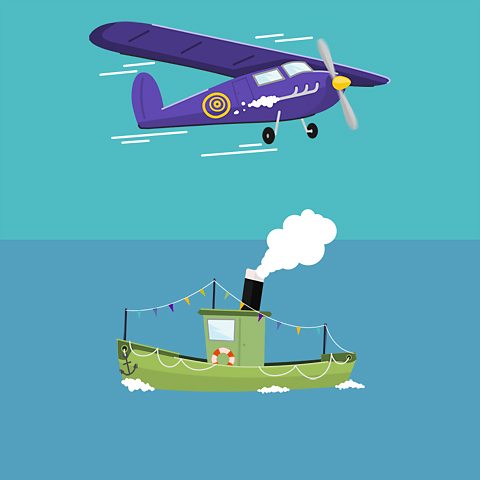
The train now arriving…
In 1830, when the world's first passenger railway opened at Liverpool Road in Manchester, a sundial was installed.
As a train travelled around the country, each station it stopped at would have a local time determined by a sundial. This made keeping the railway running to an accurate timetable very difficult. By the 1840s the railway companies were campaigning for a single universal time zone to be used across the country.
In 1847, a universal time as set by the Royal Observatory in Greenwich, London, was adopted by railway companies across Great Britain, and then across the country.
As the world became more connected thanks to travel and trade, the benefits of time zones became apparent. In 1884 Greenwich Mean Time (GMT) was adopted as a standard time across the world. All ships travelling from country to country could carry accurate clocks known as chronometers, which would be set to the time in London. Adjustments could then be made to account for local time when the ships arrived. Many large countries like China and India would have many different time zones.
Why does time fly when you're having fun?

Tick, tock…
You know what they say: time flies when you're having fun. But does it really? Scientists have been investigating how we perceive time for some time.
Brains have many different ways of telling the time. One clock keeps track of the time of day, so that you know when it is time to go to sleep or wake up. Some animals have a clock that keeps track of the time of year, so birds know when to fly somewhere warmer, and bears know when to hibernate.
Another clock lets you follow how time is passing now, the sort of thing that lets you know when you are getting towards the end of a lesson, without having to look at your watch. But this clock isn’t always right, and sometimes it can mean that time seems to pass really quickly, and other times really slowly.
How time flies
Most scientists think the way we measure time is like having a ticker that beats time inside our heads. Without really noticing, we count the ticks to keep track of how much time has passed. Click on the image and then on the labels to find out more.
But there's more. During a study, scientists tried tricking people into thinking that time was passing quickly, by showing them a clock that ran faster than it should. People said that they thought they were having a more enjoyable time, which suggests that it's not just time that flies when you're having fun - you also think you're having more fun when you think time's flying! On the other hand, when the clock ran slower than it should, people didn’t think they were having as much fun.
Looking back
Our minds’ clocks are useful for tracking time as it passes, but when looking back we have to do something different.
To judge how long an event in the past feels, we look at the amount of new stuff we can remember from that time.
This is why sometimes the first day of a holiday or a new term can feel like it’s zipping past very quickly, but when we look back on it later, it feels like it lasted for ages because of all the things we can remember doing.
Can you make time go faster?
If you want time to pass more quickly, the best thing is to try not to think about time at all, and focus on something else.
People say that a watched pot never boils, and scientists have shown that sitting waiting for something to happen makes time seem to run really slowly. So find a distraction.
Things where you’re trying to reach a goal – like playing a game or working on a project or puzzle – are particularly good at making time go quickly.
But anything that gets your attention and stops you noticing the tick-tock of your mind’s clock will help time zip along.

